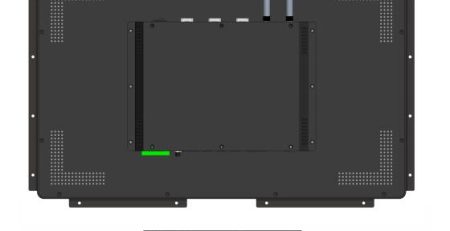Not all solid-state drives (SSDs) are as quick as SSDs. The term “eMMC” refers to the flash storage found in many low-cost tablets and laptops. It is slower and less expensive than a standard solid-state drive (SSD) found in higher-priced PCs.
EMMC storage is quite similar to SD cards. However, although it is entirely flash memory, just as an SD card cannot compete with a fast solid-state drive, eMMC storage cannot compete with an SSD either.
RELATED: What Is eMMC?
Additionally, USB Sticks and SD Cards Have Flash Memory, But…
Flash memory—typically NAND flash memory—is present in USB flash drives and other types of SD cards. USB flash drives include a flash memory chip, a basic controller, and a USB interface on a printed circuit board (PCB). SD cards feature a flash memory chip and an SD controller on a circuit board. Both SD cards and flash drives are rather straightforward, as they are often designed to be as inexpensive as possible. They lack the advanced firmware and other features found on a solid-state drive (SSD).
SD cards are classified according to their “speed class”—and the slowest is extremely slow. While installing your operating system on an SD card is technically doable, it would be a very bad idea. They operate at a significantly slower speed than even the fastest SSDs.
More Sophisticated Solid-state Drives
A solid-state drive is not comprised of the same components as a flash drive or SD card. True, they use the same sort of NAND flash memory chips—but an SSD has many more NAND chips, and they are typically speedier and of higher quality.
Additionally, SSDs include a controller with complex firmware. For example, an SSD controller distributes read and write operations across all of the SSD’s memory chips, reducing its reliance on the performance of any single chip. The controller operates like that of a RAID configuration—it speeds things up by running numerous processors in parallel. When you write to an SSD, the drive may write to twenty distinct NAND flash memory chips simultaneously, whereas writing to an SD card using a single chip may take twenty times as long.
Additionally, the SSD’s firmware executes wear-leveling procedures to ensure that data written to the drive is distributed equally across the physical drive, preventing the flash memory from deteriorating. The controller displays memory to the computer in a consistent order, ensuring that the computer behaves normally, but the drive is rearranging things in the background. Additionally, SSDs support advanced performance enhancements such as TRIM. Therefore, there is no true need for an “SSD optimization” program, as the SSD’s firmware optimizes the drive automatically, rearranging data to improve performance.
Additionally, an SSD is often attached to the computer via a SATA 3, mSATA, or SATA Express interface, all of which are far quicker than the ports accessible on a standard flash drive or SD card.
Explanation of the eMMC
A MultiMediaCard (MMC) is comparable to a Secure Digital (SD) card. SD cards were thought to be an upgrade over MMC cards and have generally overtaken them in new gadgets. Nowadays, practically all gadgets feature an SD card slot rather than an MMC port. However, the specification for embedded MMCs (eMMCs) has continued to be developed and improved.
An eMMC drive is not a high-performance internal drive with SSD-level performance and capabilities. Rather than that, it is an MMC implanted on the motherboard of a device. MMC cards, like SD cards, and their interfaces are significantly slower than SSDs. It enables manufacturers to offer low-cost internal storage options. Additionally, the eMMC device contains a controller that enables it to boot, allowing it to be utilized as a system drive in low-cost Android, Windows, and Chrome OS tablets and laptops.
However, eMMC lacks the firmware, flash memory chips, high-quality hardware, and rapid interface that contribute to the SSD’s speed. As a result, as with SD cards, eMMC storage is significantly slower than more advanced SSDs.
eMMC is frequently found in handheld electronic devices like cell phones and digital cameras. Using a push toward super-cheap $99 tablets and $199 laptops that require solid-state storage rather than mechanical drives, inexpensive tablets and laptops are also being constructed with eMMC drives. Typically, a device’s specifications will indicate whether it includes an eMMC drive. If the device is extremely inexpensive, it is likely to be equipped with an eMMC storage device rather than an SSD.
eMMC Is Not a Bad Solid-state Storage, But It Is Not the Fastest
In theory, there is nothing incorrect with eMMC. With its increased size, complexity, and cost, your digital camera doesn’t require a full SSD. When shopping for a laptop or tablet, however, the limits of eMMC become more evident. As with SD cards, not all eMMC storage is equal—some eMMC storage is significantly slower than others. All eMMC storage, on the other hand, will be slower than a dedicated SSD.
When evaluating speed, you should probably seek up the storage benchmarks for the eMMC-based device in question—some are quicker than others. eMMC is becoming faster due to hardware advancements and new eMMC standards. However, if you’re a serious laptop user, you’re unlikely to want to be trapped with eMMC-based storage beneath your Windows notebook—even if it saves you money.
Golden Margins –
Entire Range of Touchscreen Products

We hope you found these touchscreen or panel PCs fundamentals informative. Goldenmargins offers a broad selection of Industrial Touchscreen Monitors and Touch Panel PCs in various sizes and configurations, including medical touch screens, sunlight-readable touch screens, open-frame touch screens, and waterproof touch panels, as well as other unique touch screen or panel PC designs. You can learn more about our services HERE or by calling us at +86 755 23191996.










